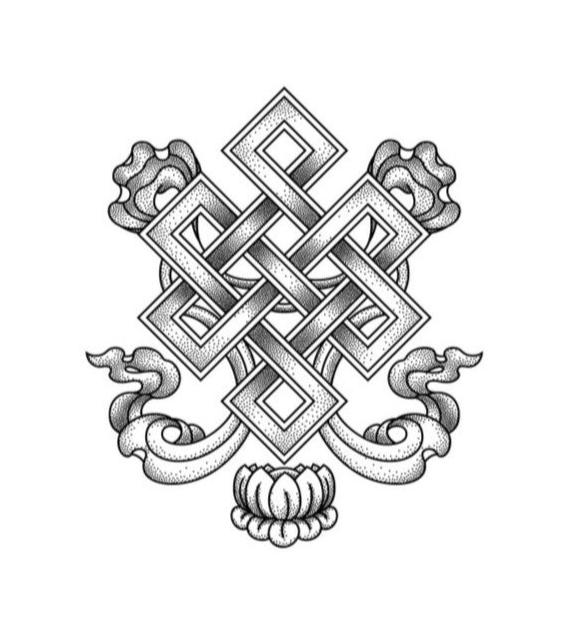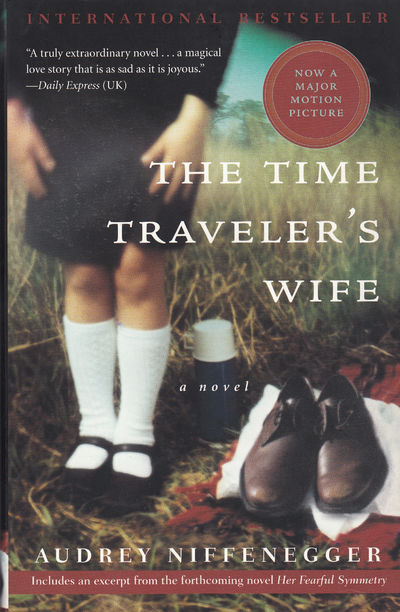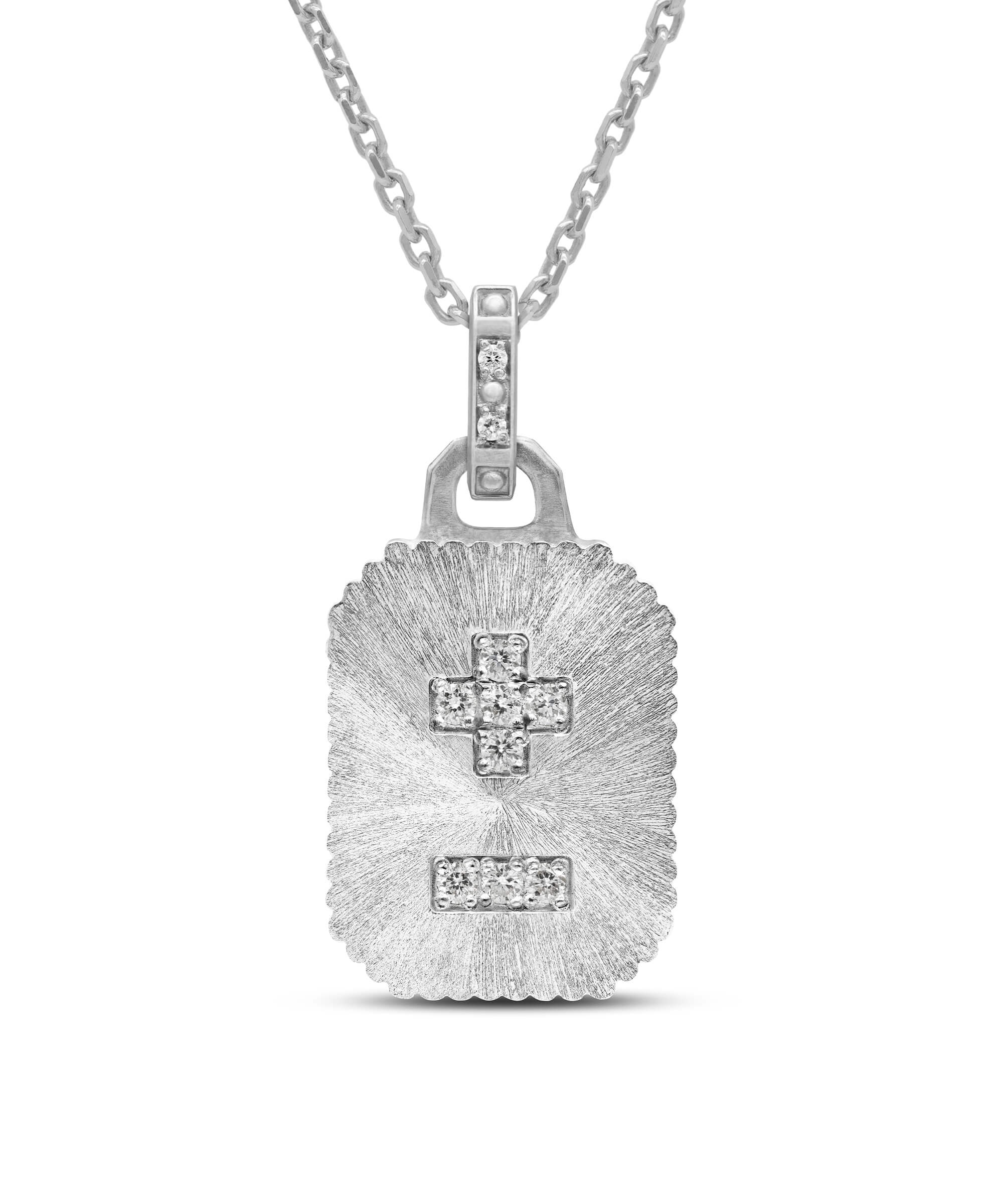The infinity symbol (∞) is one of the most universally recognized emblems of timelessness and limitless potential. Originating from ancient concepts of eternity and continuity, its modern form was introduced in 1655 by mathematician John Wallis, representing mathematical infinity—a concept that transcends boundaries and defies limits. Resembling a sideways figure eight, the symbol has been embraced across cultures and philosophies for its profound meanings, from the eternal cycles of life and balance in ancient Indian and Tibetan traditions to its ties with the Ouroboros, the serpent devouring its own tail. In today’s world, the infinity symbol continues to inspire as a representation of boundless opportunities, unbreakable bonds, and the enduring journey of life, finding its place in art, jewelry, and modern spirituality.
Amuletha™ Book of Symbols
Infinity Symbol
*"Relativity" by M.C. Escher (1953)
One of the most famous paintings associated with the concept of infinity is "Relativity" by M.C. Escher (1953). Escher was a Dutch artist known for his mathematically inspired works that often explore impossible spaces, infinite patterns, and complex architectural designs. In Relativity, Escher creates a world where the rules of gravity seem to shift endlessly, with figures walking in all directions, defying conventional physics. His use of repeating, infinite structures and mind-bending perspectives has made this piece iconic in representing the concept of infinity and paradox.

*"Relativity" by M.C. Escher (1953)
One of the most famous paintings associated with the concept of infinity is "Relativity" by M.C. Escher (1953). Escher was a Dutch artist known for his mathematically inspired works that often explore impossible spaces, infinite patterns, and complex architectural designs. In Relativity, Escher creates a world where the rules of gravity seem to shift endlessly, with figures walking in all directions, defying conventional physics. His use of repeating, infinite structures and mind-bending perspectives has made this piece iconic in representing the concept of infinity and paradox.
INFINITY SYMBOL ORIGIN
The infinity symbol (∞) has become one of the most widely recognized symbols in modern culture, representing concepts of eternity, limitless potential, and the endless cycle of life. Its origins can be traced back to ancient civilizations, where similar symbols were used to represent ideas of eternity and continuity. However, the modern form of the infinity symbol was introduced in 1655 by the English mathematician John Wallis, who used it to represent mathematical infinity—something that goes on forever without bound.
The shape of the infinity symbol resembles a sideways figure eight, which has been linked to numerous cultural and philosophical interpretations. In ancient Indian and Tibetan philosophies, the shape is thought to represent duality and balance, such as the connection between life and death, creation and destruction, and other opposing forces in the universe. The infinity symbol also has ties to the Ouroboros, an ancient symbol depicting a serpent eating its own tail, which similarly conveys the concept of eternal cycles and the endless nature of time.
In modern times, the infinity symbol has transcended its mathematical origins and is used across various fields, from spirituality and personal growth to fashion and design. It signifies not only eternity but also the limitless potential of human experience, the unbreakable bonds between people, and the continuity of life and energy. Its simplicity and profound meaning have made it a powerful symbol in jewelry, art, and philosophy, where it continues to inspire ideas of boundlessness and infinite possibilities.
What does infinity symbolize?
The Infinity symbol, a universally recognized emblem, that transcends cultures and time, rich with profound symbolism. Here are four refined interpretations of what the infinity conveys:
Eternity
Represents timelessness and the endless cycle of life and existence.
Limitless Potential
Symbolizes boundless possibilities and the idea that growth and achievement have no limits.
Continuity
The unbroken loop reflects harmony, balance, and the interconnectedness of all things.
Unbreakable Bonds
In relationships, it signifies enduring love or friendship that lasts forever.
Cultural mention
The infinity symbol (∞), with its seamless and continuous loop, has become a universal representation of boundlessness, eternity, and the endless cycles of nature and existence. From ancient mythology to modern science, this symbol transcends both time and discipline. It not only appears in spiritual and religious traditions but also plays a critical role in our understanding of the universe, mathematics, and the interconnectedness of all things. Whether seen in sacred emblems or astronomical equations, the infinity symbol captures humanity’s fascination with the concept of the infinite, serving as a bridge between the metaphysical and the scientific. Below are some of the most compelling stories and uses of the infinity symbol in culture, religion, and cosmology
The Infinity Symbol in Physics and Astronomy
In physics, the infinity symbol is used to describe singularities, such as those in black holes, where density becomes infinitely large and space-time curves infinitely. Stephen Hawking often referenced infinity in his studies of black holes, where gravitational forces create points of infinite density, challenging the laws of physics. In cosmology, infinity represents the vast, potentially boundless nature of the universe, raising the possibility that the universe extends infinitely or even hosts multiple parallel universes. This symbol is essential in mathematical equations describing unbounded growth and the expansion of the universe.
*First ever direct picture of the black hole (2019)

*First ever direct picture of the black hole (2019)
The Ouroboros
The Ouroboros, an ancient symbol of a serpent or dragon devouring its own tail, is one of the earliest depictions of the concept of infinity. Originating in Egyptian iconography around the 14th century BC, it symbolizes the endless cycle of life, death, and rebirth. This self-consuming serpent represents the perpetual nature of existence—the idea that destruction and creation are inseparable, and that life constantly renews itself. In later interpretations by alchemists and mystics, the Ouroboros came to signify immortality and the unity of all things. The circular shape reflects the infinite loop of time, where endings are simply new beginnings, echoing the spiritual belief in life's unceasing progression.
*An ouroboros in a 1478 drawing in an alchemical tract

*An ouroboros in a 1478 drawing in an alchemical tract
Tibetan Knot of Eternity
In Tibetan Buddhism, the endless knot, also known as the Shrivatsa, is a sacred emblem that resembles the infinity symbol in its continuous, interwoven form. The knot has no beginning or end, representing the eternal flow of time and the interconnectedness of all life and phenomena. Deeply rooted in Buddhist teachings, it symbolizes the infinite cycle of birth, death, and rebirth, reflecting the belief in samsara—the cycle of existence. The knot also embodies the union of wisdom and compassion, two fundamental principles in Buddhism. It serves as a reminder that everything is interconnected and that actions and intentions have boundless impacts across time and space, much like the endless loops of the symbol itself.
Depiction of Shrivatsa

Depiction of Shrivatsa
Infinity symbol in the world of jewelry
The infinity symbol is popular among individuals who value timeless connections and the idea of limitless potential. It is commonly worn by people who want to express eternal love, deep friendship, or lasting commitment. The simplicity of the design makes it appealing to a wide range of people, from couples seeking to represent their unbreakable bond to those who want to symbolize infinite possibilities in personal growth or life’s journey. Additionally, spiritual individuals who view the symbol as representing the cyclical nature of life or the boundless universe are drawn to its deep, philosophical meaning.Gifting someone infinity-themed jewelry is a powerful gesture, symbolizing eternal love, friendship, or commitment. It represents an unending bond that transcends time and space, making it a popular choice for anniversaries, weddings, or important milestones in relationships. The infinity symbol also conveys a wish for the recipient to experience limitless possibilities, growth, or potential. Whether given between friends, family members, or romantic partners, an infinity gift expresses a desire for an everlasting connection and a future filled with boundless opportunities.
infinity SYMBOL IN LITERATURE
The infinity symbol has been used in literature to represent themes of eternity, endless possibilities, and the boundless nature of time and existence. Writers and poets often incorporate the infinity symbol metaphorically to explore concepts like love, immortality, and the endless journey of human experience. It serves as a powerful symbol for characters seeking meaning in an ever-expanding universe or navigating infinite choices in life. Below are some notable uses of infinity in literature.
The Time Traveler's Wife by Audrey Niffenegger
In "The Time Traveler's Wife" by Audrey Niffenegger, the theme of infinity is woven throughout the story as the characters experience love that transcends time. The novel’s exploration of eternal love despite the constraints of time and space embodies the essence of the infinity symbol. Henry’s uncontrollable time traveling and Clare’s patient waiting echo the idea of an unbreakable, infinite bond that persists beyond the physical limitations of time.
The book cover of the "The Time Traveler's Wife"

"To Infinity" by John Clare
The stars beyond our count or reach,
Far in the endless blue they preach,
Of things we know, yet cannot see,
And truths that stretch to infinity.
In this poem, Clare uses the stars to symbolize infinity, representing the infinite nature of the universe and human curiosity. The poem conveys the idea that some truths are boundless, reaching far beyond what humans can fully comprehend.
"Infinity" by William Blake
To see a world in a grain of sand,
And a heaven in a wildflower,
Hold infinity in the palm of your hand,
And eternity in an hour.
Blake’s famous lines from Auguries of Innocence explore the concept of infinity through the juxtaposition of small and vast elements. He captures the idea that the infinite can be found in the simplest aspects of life, linking infinity to imagination and the boundless potential of human experience.
"Endless Love" by Rabindranath Tagore
Time is endless in thy hands, my lord.
There is none to count thy minutes.
Days and nights pass and ages bloom and fade like flowers.
Thou knowest how to wait.
In this excerpt, Tagore reflects on the infinite nature of time and love. The poem emphasizes the eternal quality of love and existence, echoing the infinity symbol’s representation of boundless time and devotion.
Thoughts
Thoughts placed alongside a symbol resonate with its meaning, serving as a guide to expand your understanding of the symbol's significance in relation to your personal experiences. AMULETHA™ also embraces this approach, invites a deeper contemplation of how symbolic meanings can reflect and enrich your life’s narrative, enhancing your appreciation of both the symbol and its broader implications.
Endless Life Cycle - Represents the infinite nature of existence, emphasizing timelessness and the never-ending cycle of life and rebirth.
Boundless Growth Power - Symbolizes the idea of limitless potential, where opportunities for growth and achievement are unrestricted and expansive.
Unbroken Interconnected Flow - Reflects the unbroken continuity of life, symbolizing harmony, balance, and the interconnectedness of all things in the universe.
Eternal Love Connection - In relationships, it represents unbreakable bonds, signifying lasting love or friendship that endures the test of time.
FREQUENTLY ASKED QUESTIONS
Is infinity a concept that can be fully understood by the human mind?
Infinity is a concept that challenges the human mind because it defies our time-bound experience of beginnings and endings. While we can imagine something lasting forever, truly grasping the boundless nature of eternity—without time, change, or decay—is difficult. It remains an abstract idea, something we can contemplate but not fully understand in the same way as more tangible realities.
What does the infinity symbol mean in different cultures?
The infinity symbol holds different meanings across various cultures, often representing concepts like eternity, endlessness, and unity. In many cultures, it symbolizes eternal love, limitless possibilities, and cycles of life, death, and rebirth. In spiritual traditions, such as Hinduism and Buddhism, the infinity symbol can represent the idea of infinite wisdom or the interconnectedness of all life. In mathematics and science, it signifies something boundless or without limits. While the exact meaning may vary, the common theme is the idea of something that has no end, often tied to universal or timeless principles.
What does the infinity symbol mean in spiritual or religious contexts?
In spiritual and religious contexts, the infinity symbol often represents concepts of eternity, the infinite nature of the soul, and the interconnectedness of all things. In Hinduism and Buddhism, it can symbolize the endless cycle of birth, death, and rebirth (samsara), as well as the infinite wisdom and compassion of the divine. In some Christian interpretations, the infinity symbol is linked to God's eternal nature and the everlasting life promised in the afterlife. More broadly, the symbol often conveys the idea of oneness with the universe, timelessness, and the boundless nature of spiritual existence.













